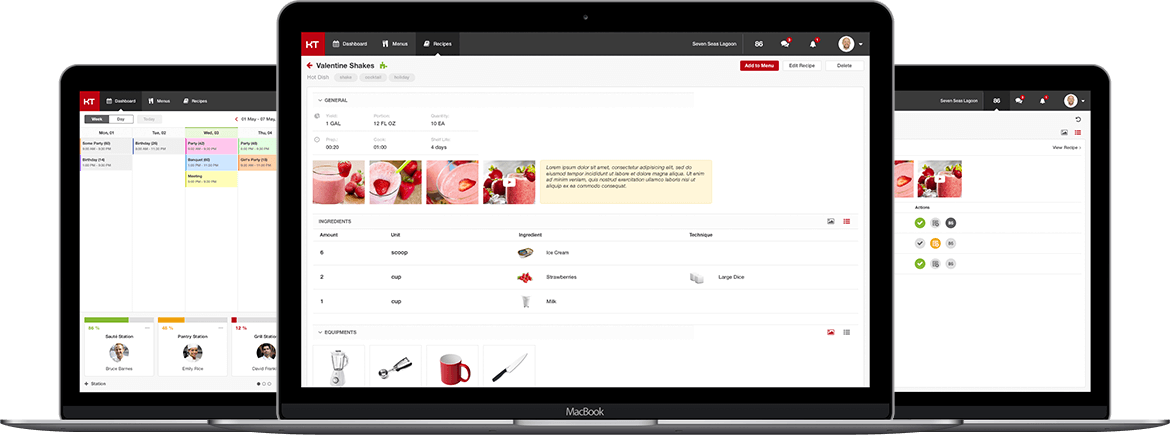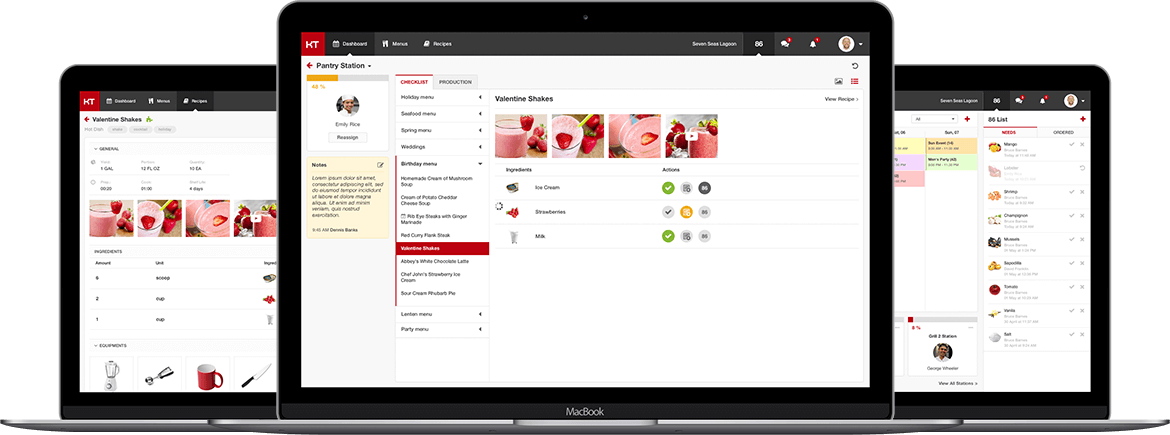Business need
Restaurants usually distribute around a third of their budgets to food, so food that gets rotten or simply goes unused because of unexpected downtime is wasted money. Around ten percent of food purchased ends up in a trash bin instead of seeing a guest, so math is pretty much obvious here.
Taking the fact that food is restaurant’s greatest expense, the software that helps restaurateurs to see trends in their food usage and maintain records of recipes and the ingredients required, can be incredibly useful in a chaotic and busy kitchen. At the end of the day inventory management software provides users with explicit data to make smart decisions and spin out money.
For now, there is still a poor selection of these instruments in the restaurant tech ecosystem, yet Softarex Technologies, Inc. has taken part in the development of such an application.
Solution
Softarex Technologies, Inc. took part in the development of the web application that brought visibility and consistency into kitchen workflows and made purchasing corresponding to actual restaurant needs. At the same time, it was flexible and highly customizable, which makes it suitable for any restaurant.
Under NDA.
Technologies
- Java
- React.js
- PostgreSQL
Project Results
- This web application allows to manage events, food preparation, purchasing, compose menus and do a lot more in one place using functional modules described below:
- Calendar — no matter which event is planned: ordinary daily meeting, menu testing or one hundred guests banket, it can be created in the Calendar with all required attributes – type, planned number of guests, selected menu, assigned employees, etc. With all events visible on the timeline it becomes easier to plan procurement.
- Stations — size and speciality of the restaurant don’t matter since this aspect is easily configurable in the app. User can create an unlimited number of stations: dessert, saute, grill, etc, and assign responsible person. What is more, employees assigned to a station can leave designated notes, so that every shift will be on the same page.
- Tasks management — the restaurant kitchen isn’t only about cooking and purchasing, users can create and manage tasks and pull them through the Kanban board. And a manager can always check the tasks completion percentage. And since the works in the restaurant are mostly typical, users can create recurring tasks which will be generated once the new shift starts.
- Recipes — user can create detailed recipes and furnish them with videos, photos, and images for each required ingredient or equipment item which all together provides clear visualization for the cook and makes a recipe very easy for understanding even in the very busy kitchen surrounding.
- Menus – all the recipes can be grouped into menus, that can be sorted into easily managed trello-looking customizable categories.
- Inventory management — once the shift starts, the To Do list of each Station is automatically filled with items from today’s menu, grouped by recipes. And so users can change the status of ingredients as they are checked and prepared for the cooking.
- Buying list – if the check has revealed that some ingredients ran short, user can easily add this item to a list, displayed on a dashboard. Once the supplies are refilled, the item can be removed from it.
- Chat — restaurant kitchens tend to include a big number of employees. In order to coordinate their work, the system is furnished with chats, that help people from different stations to communicate;
And since the system has role-based access, it is easy to define permissions for each employee.
Due to its adaptive interface, all the above-listed features can be easily accessed from both computer and tablet, which makes it really suitable – several tablets attached at each station turn kitchen into one fine-tuned mechanism.









